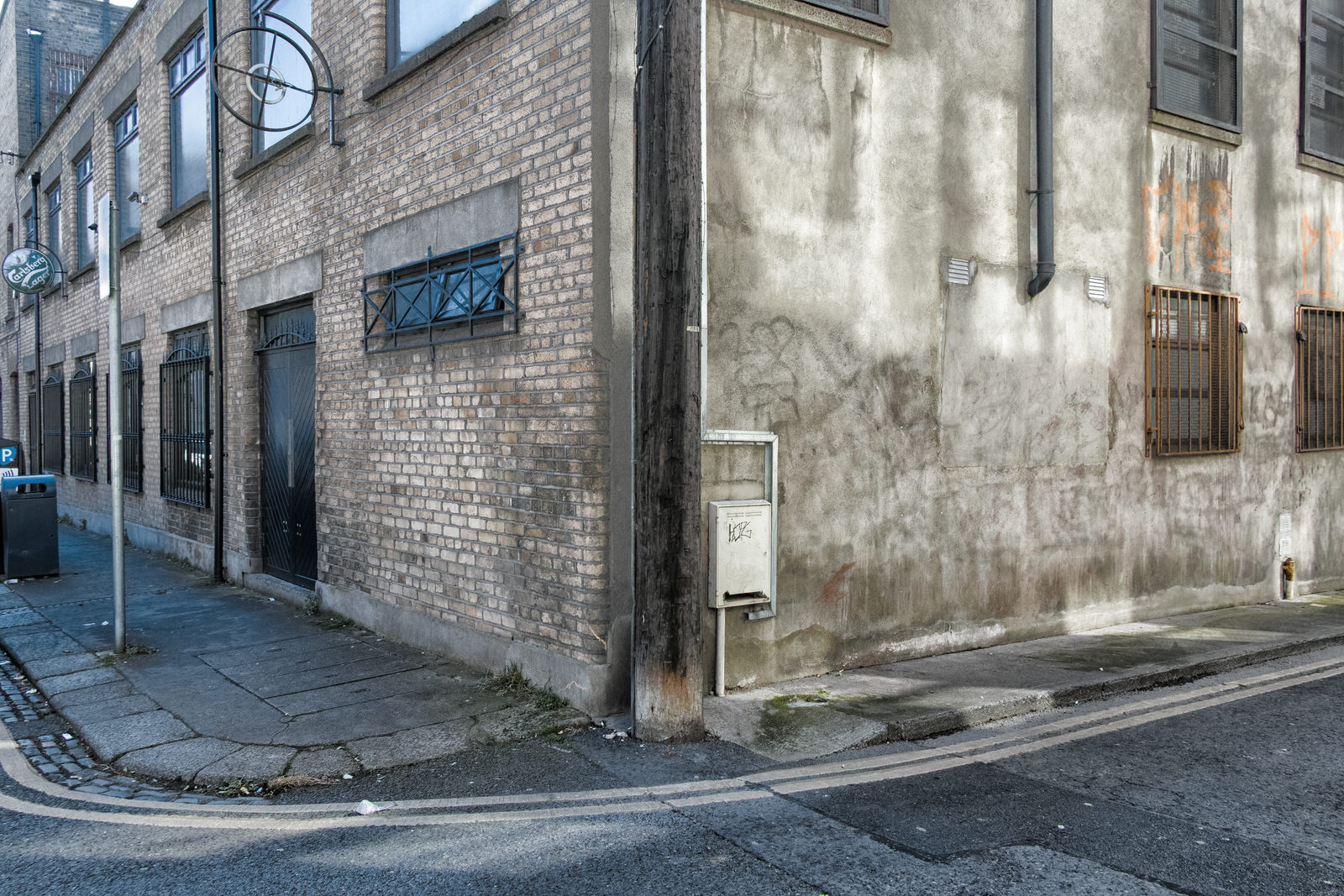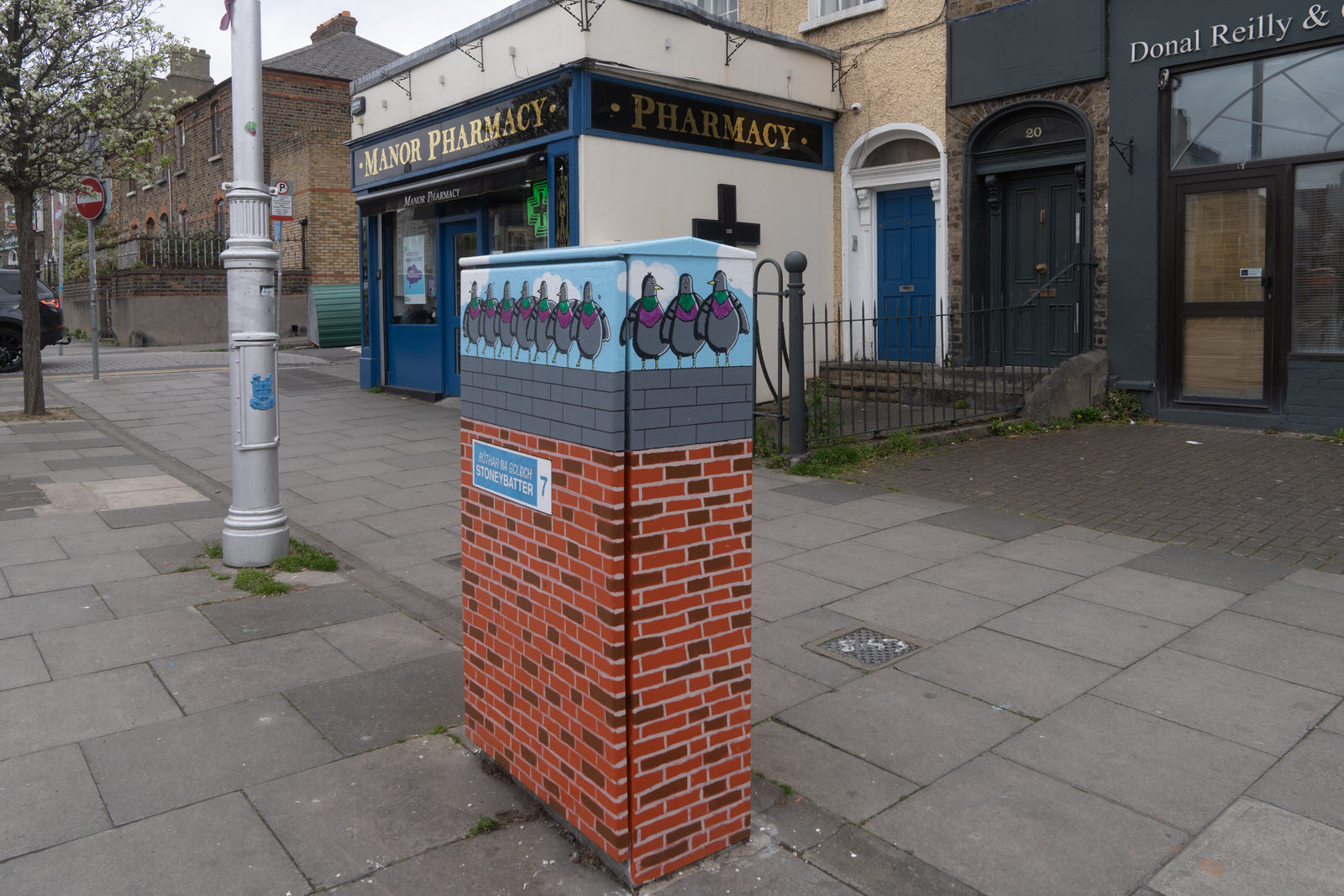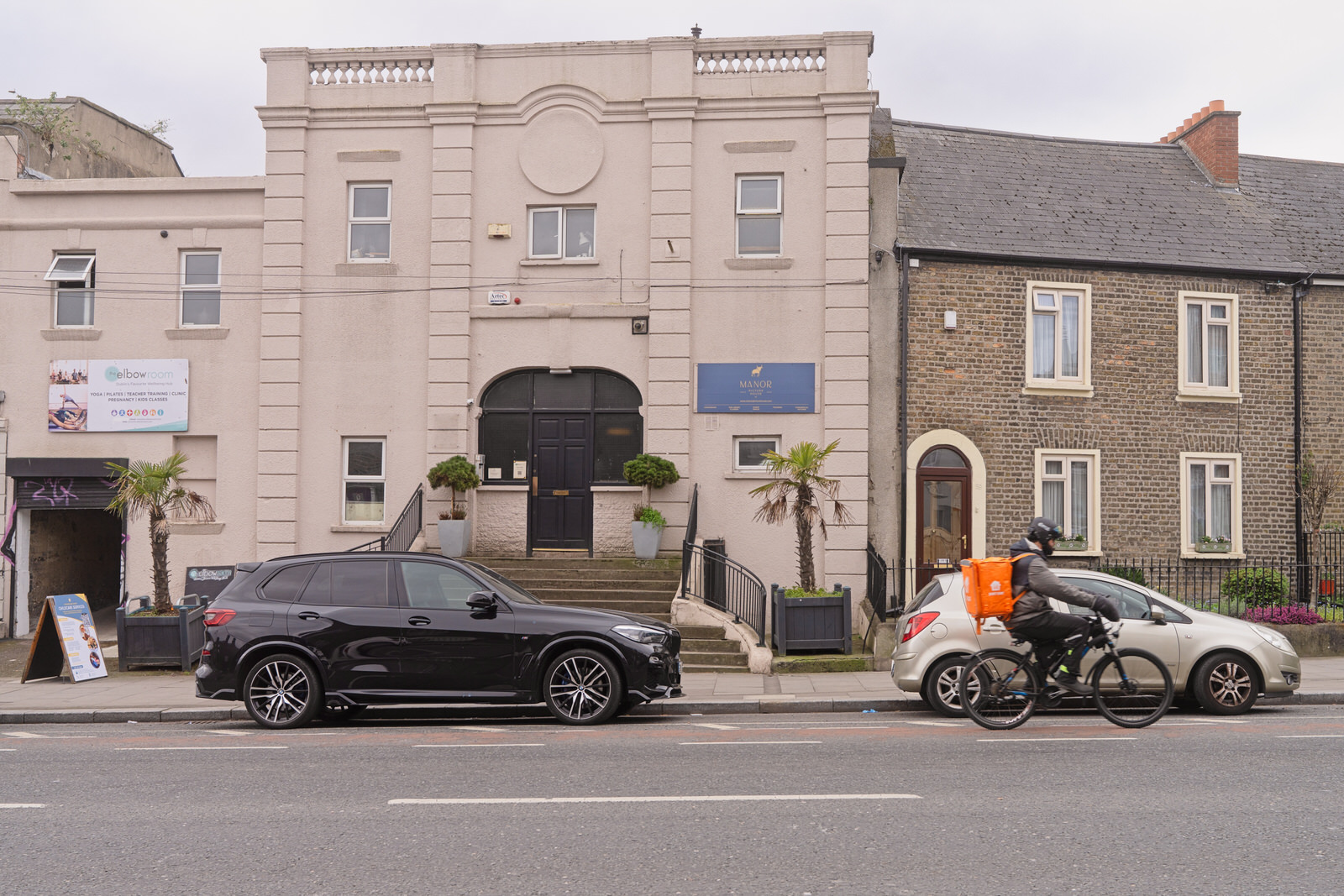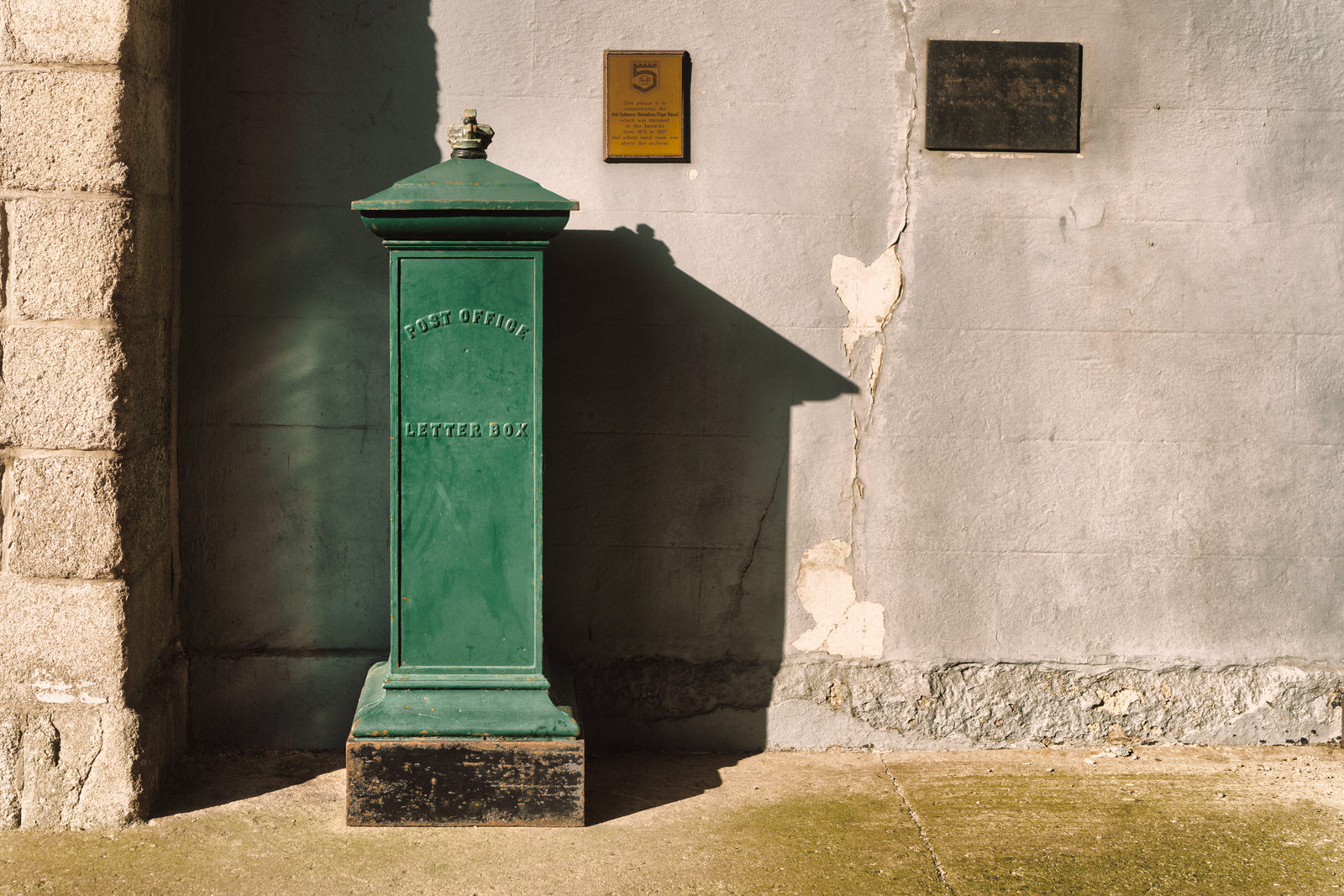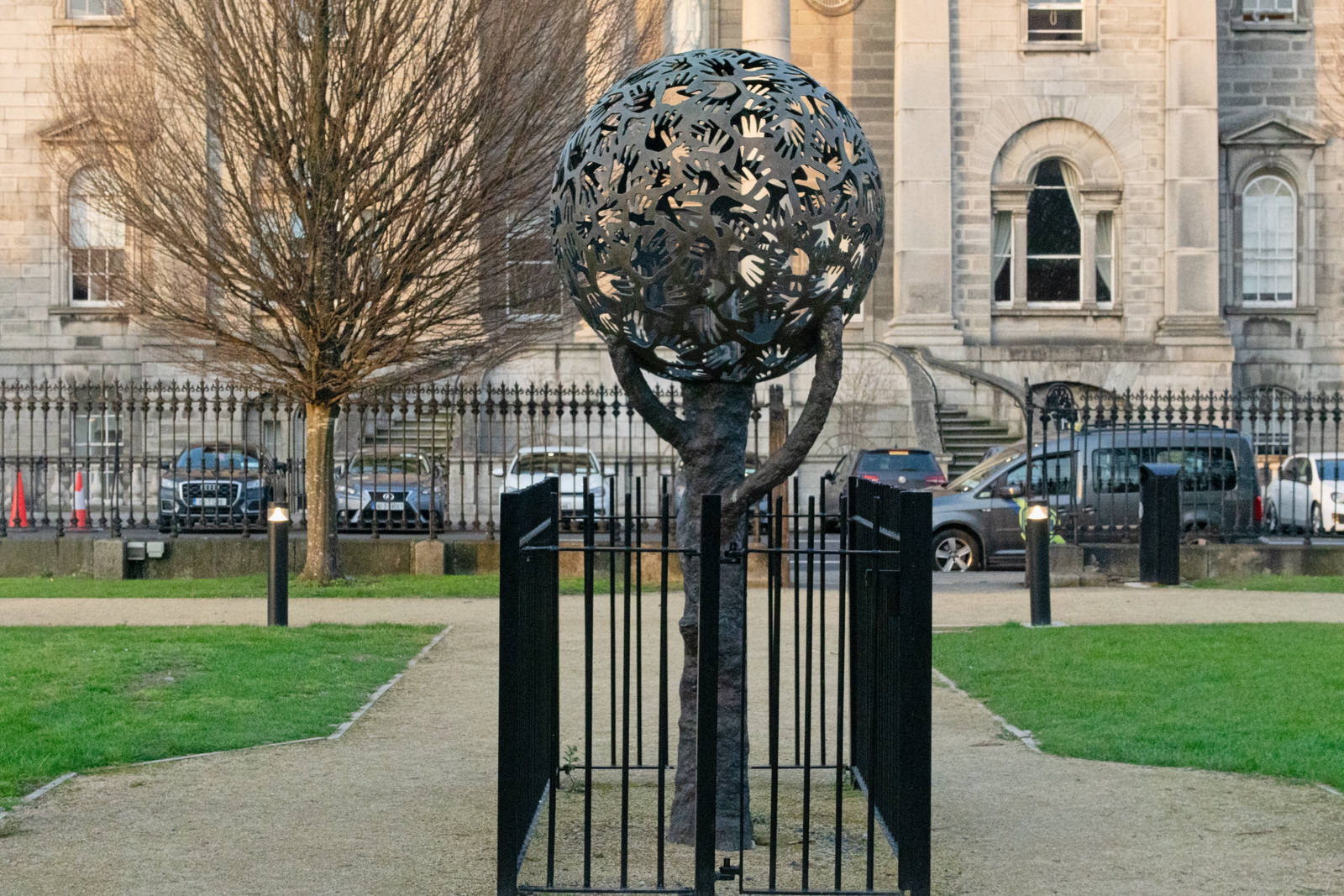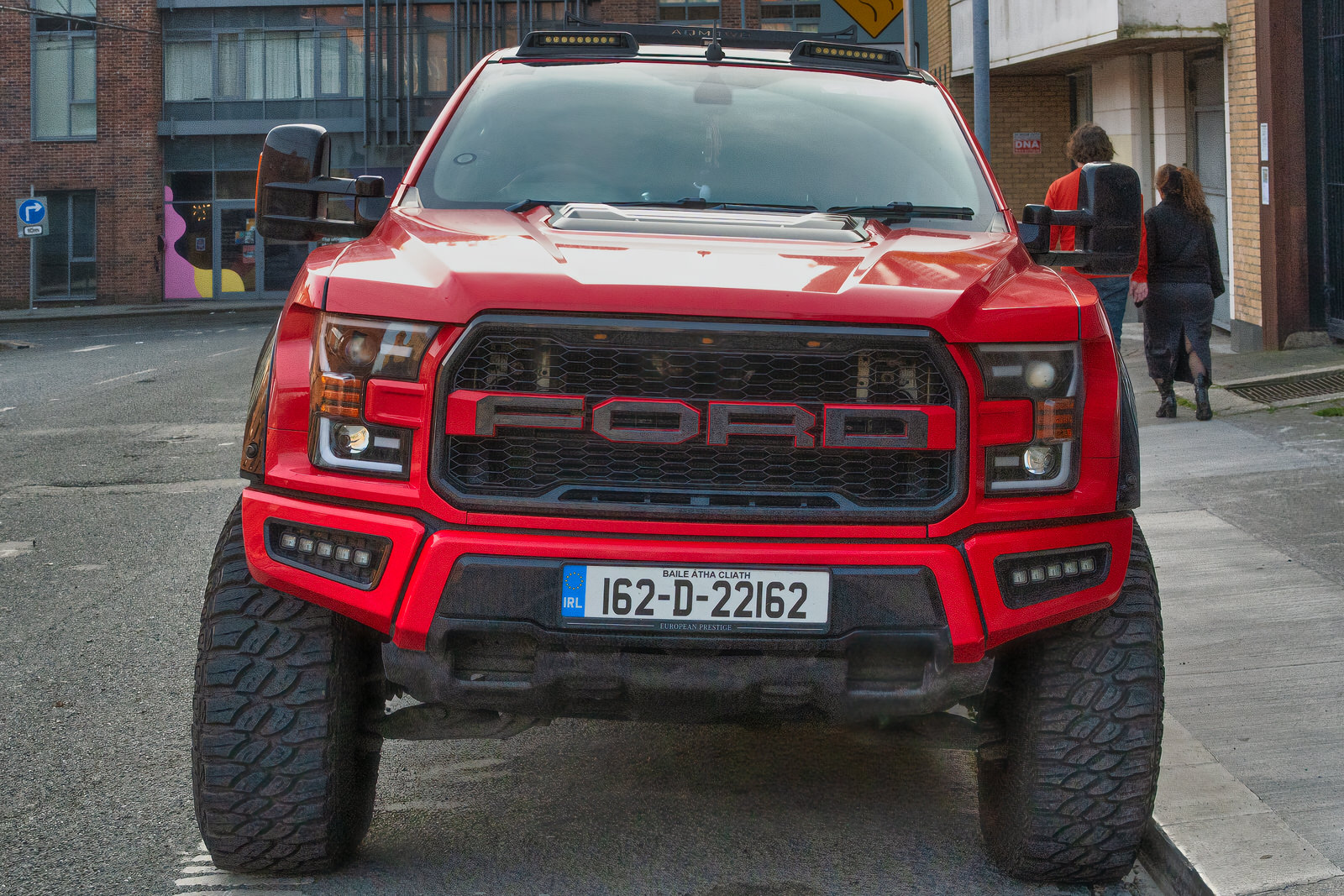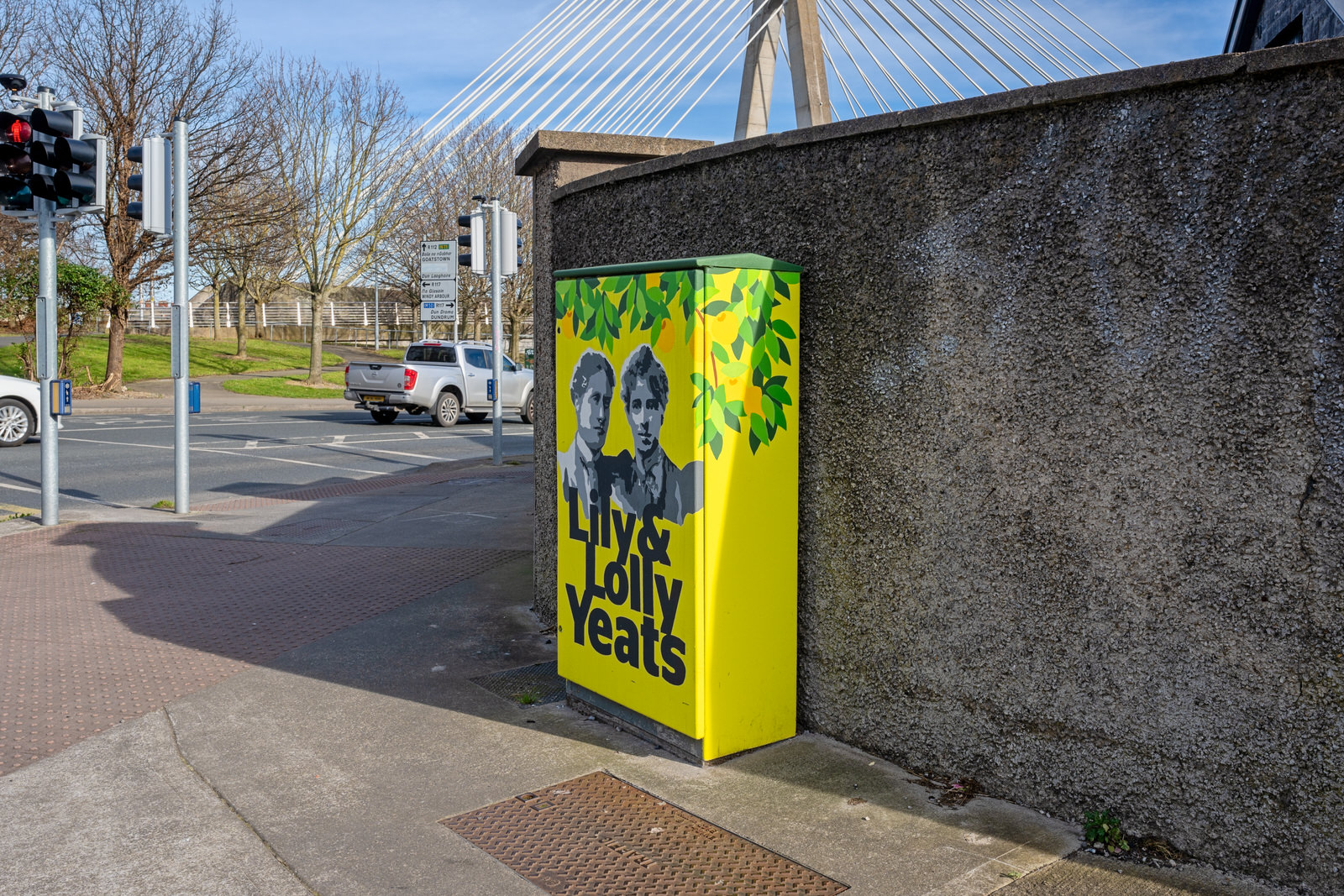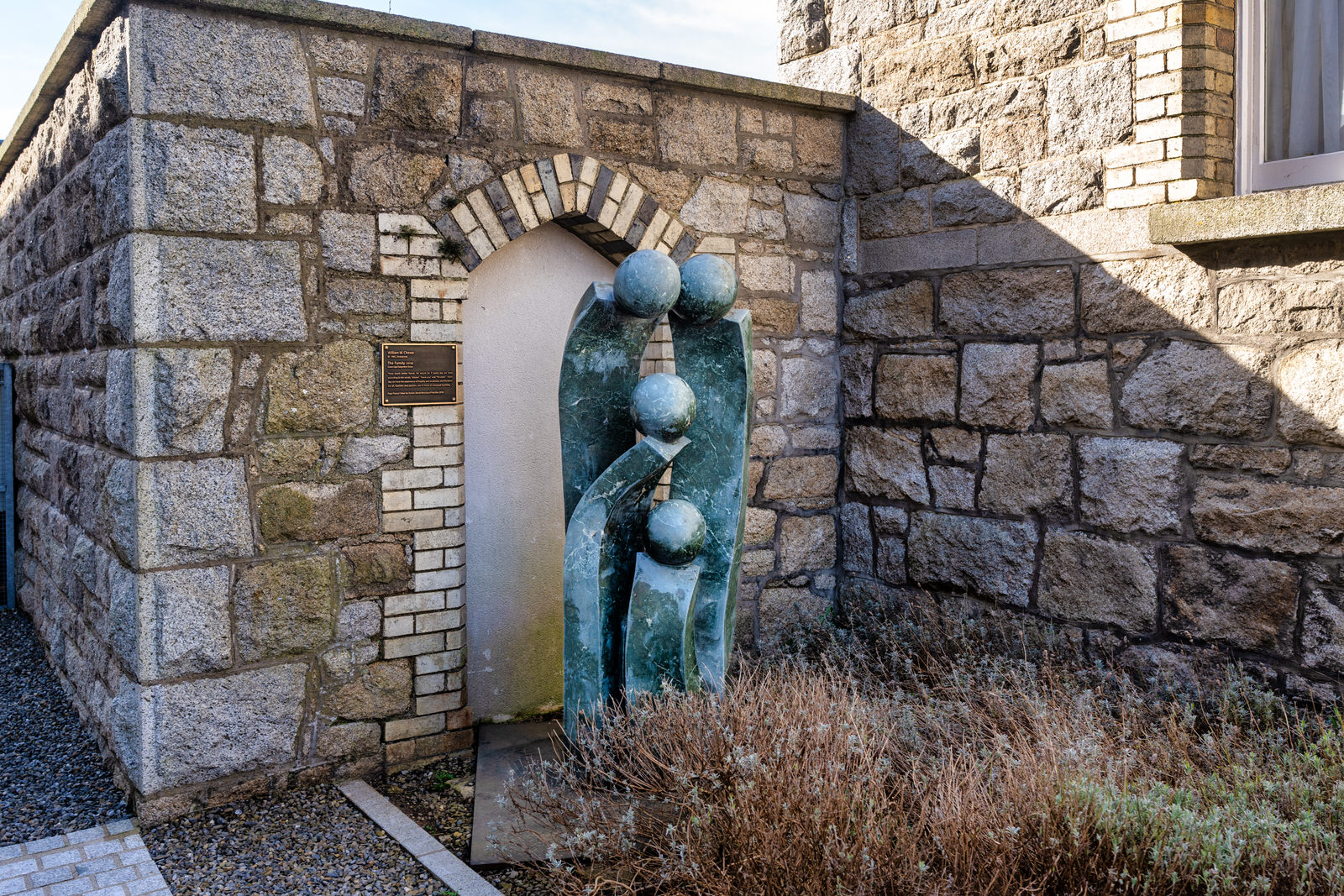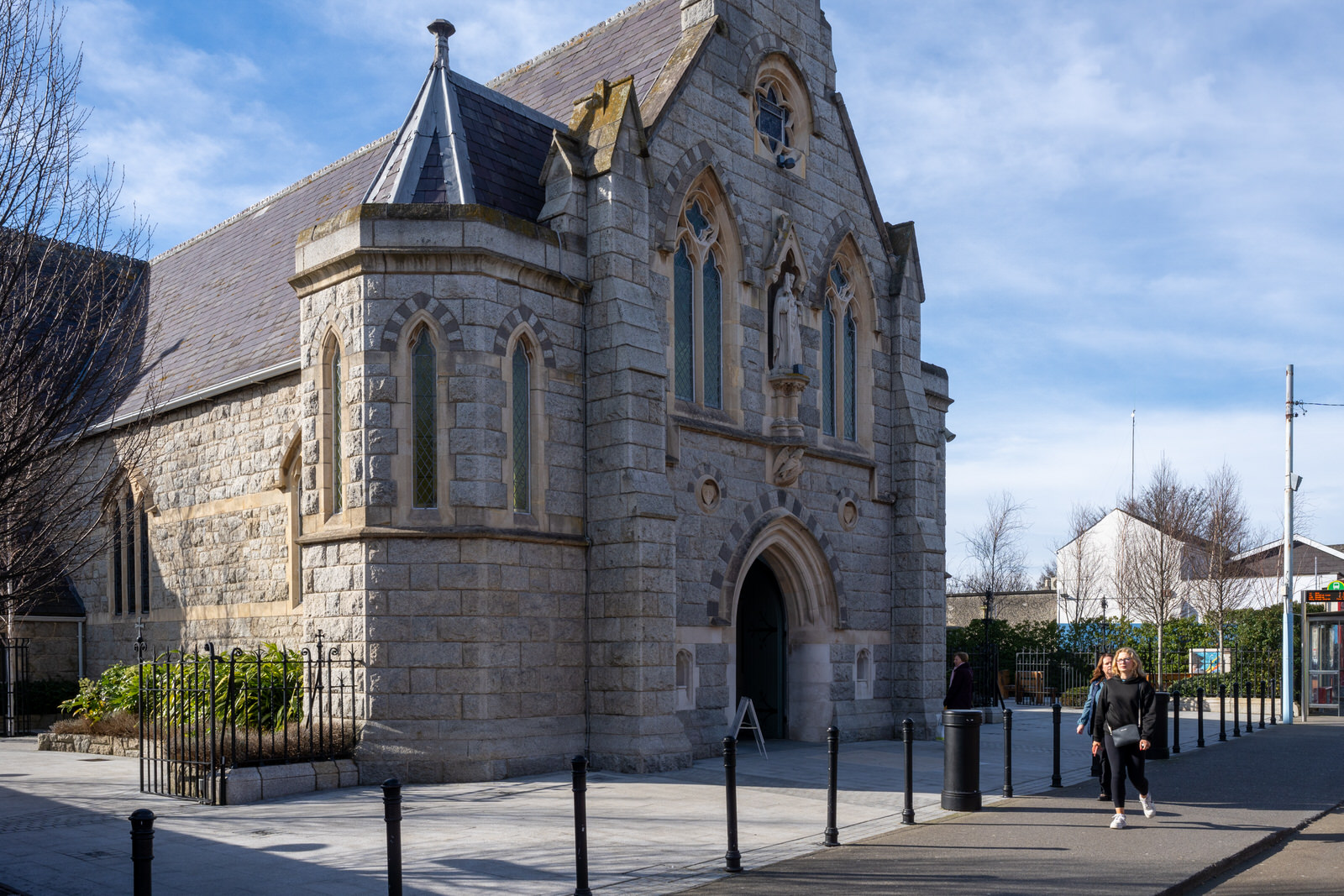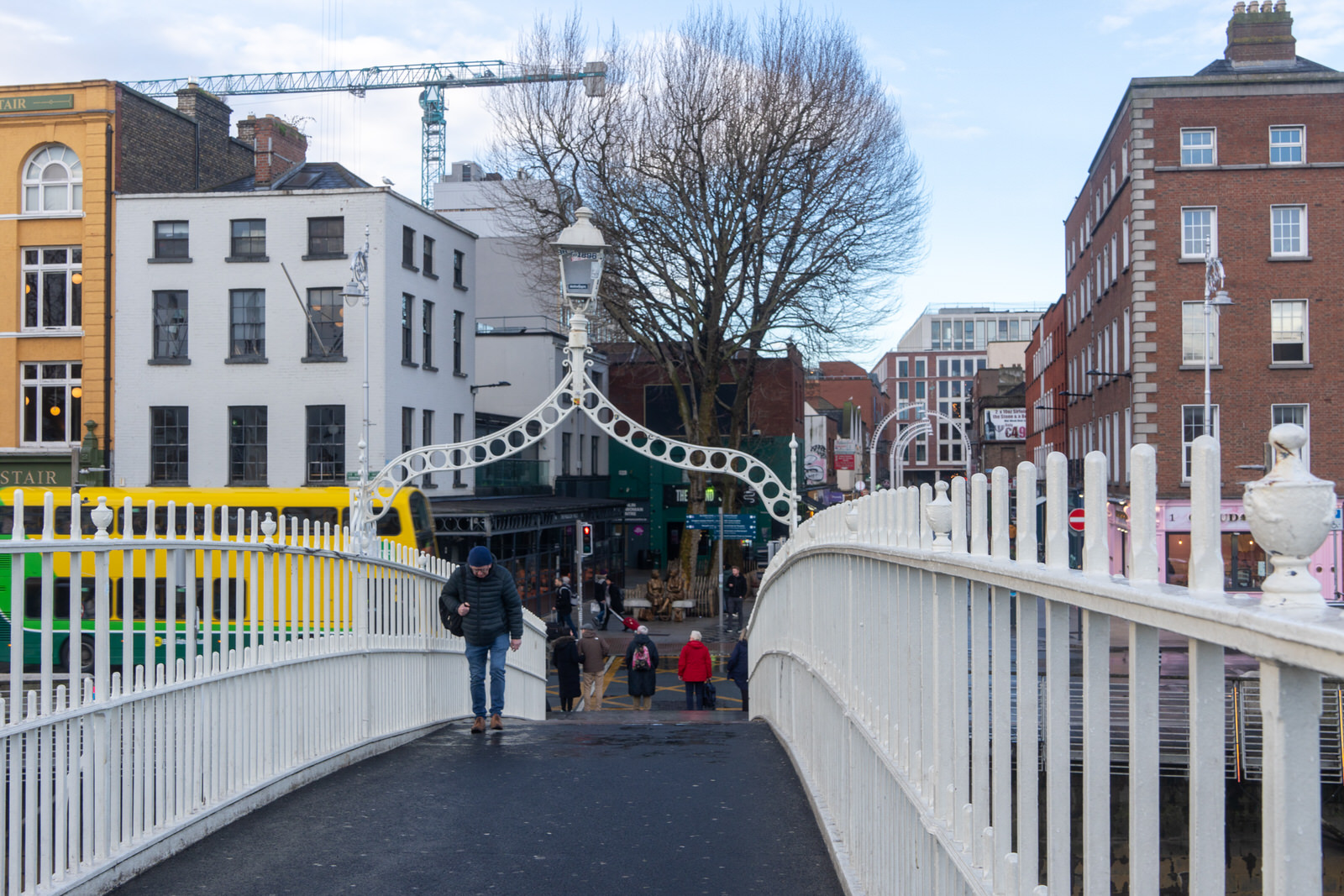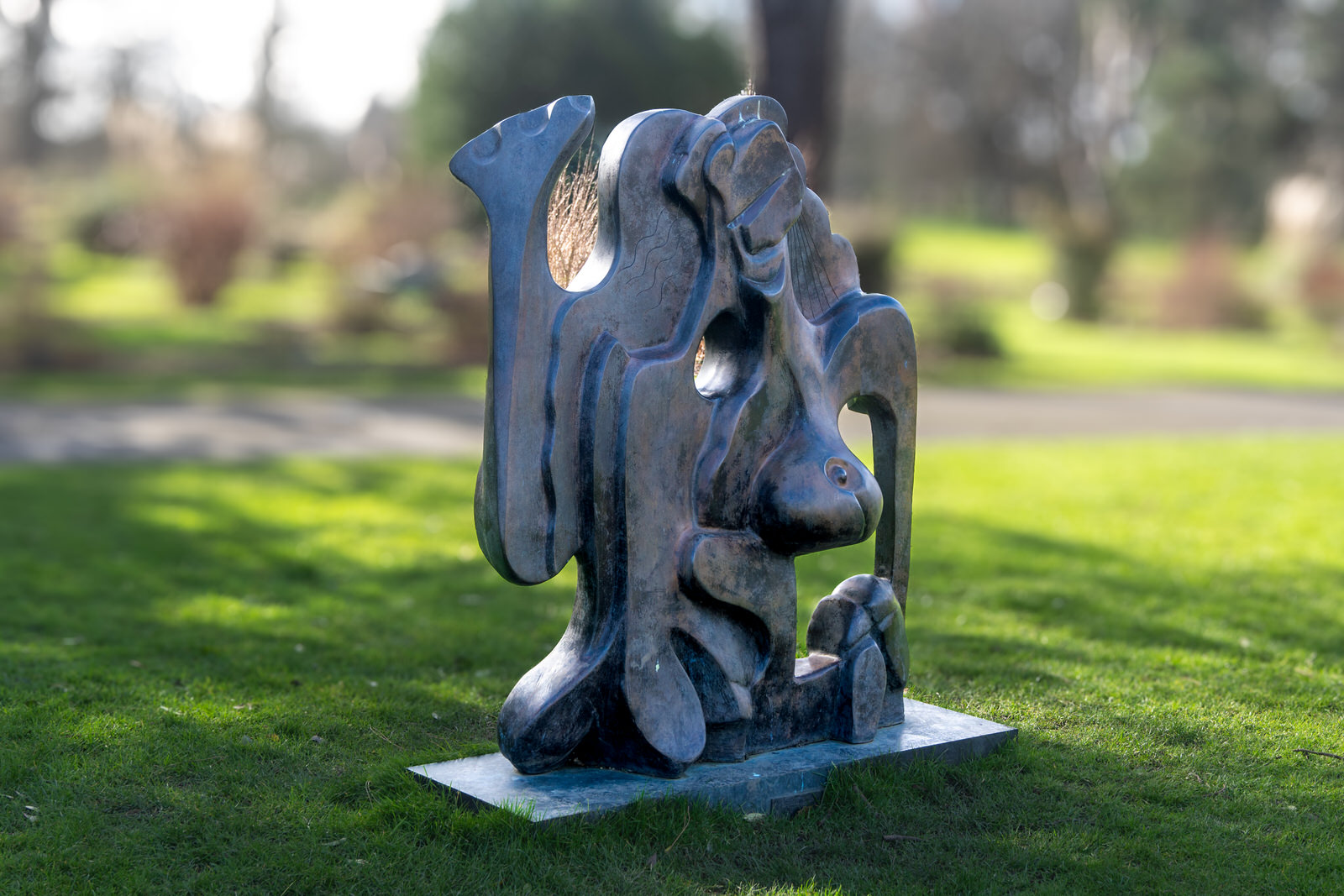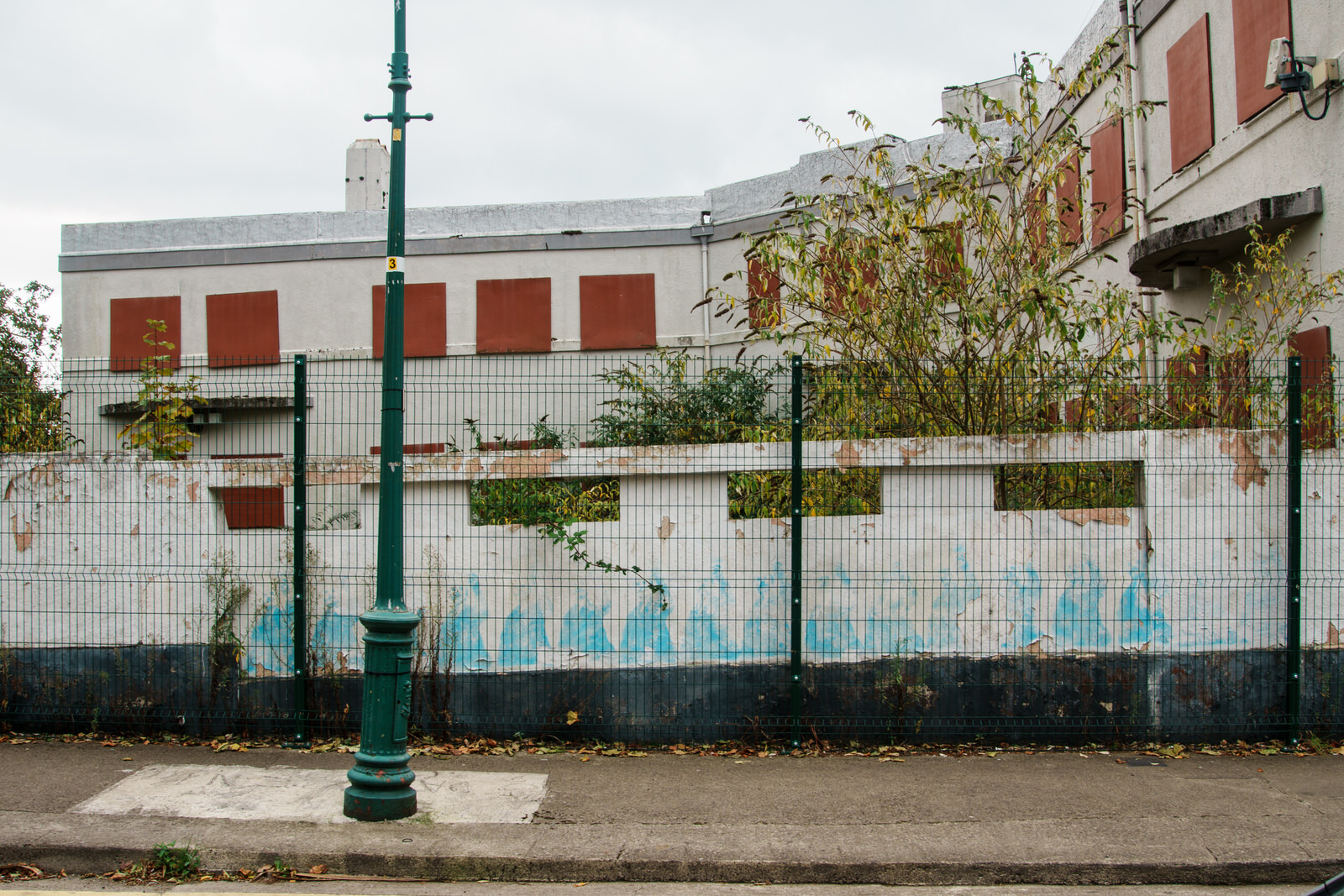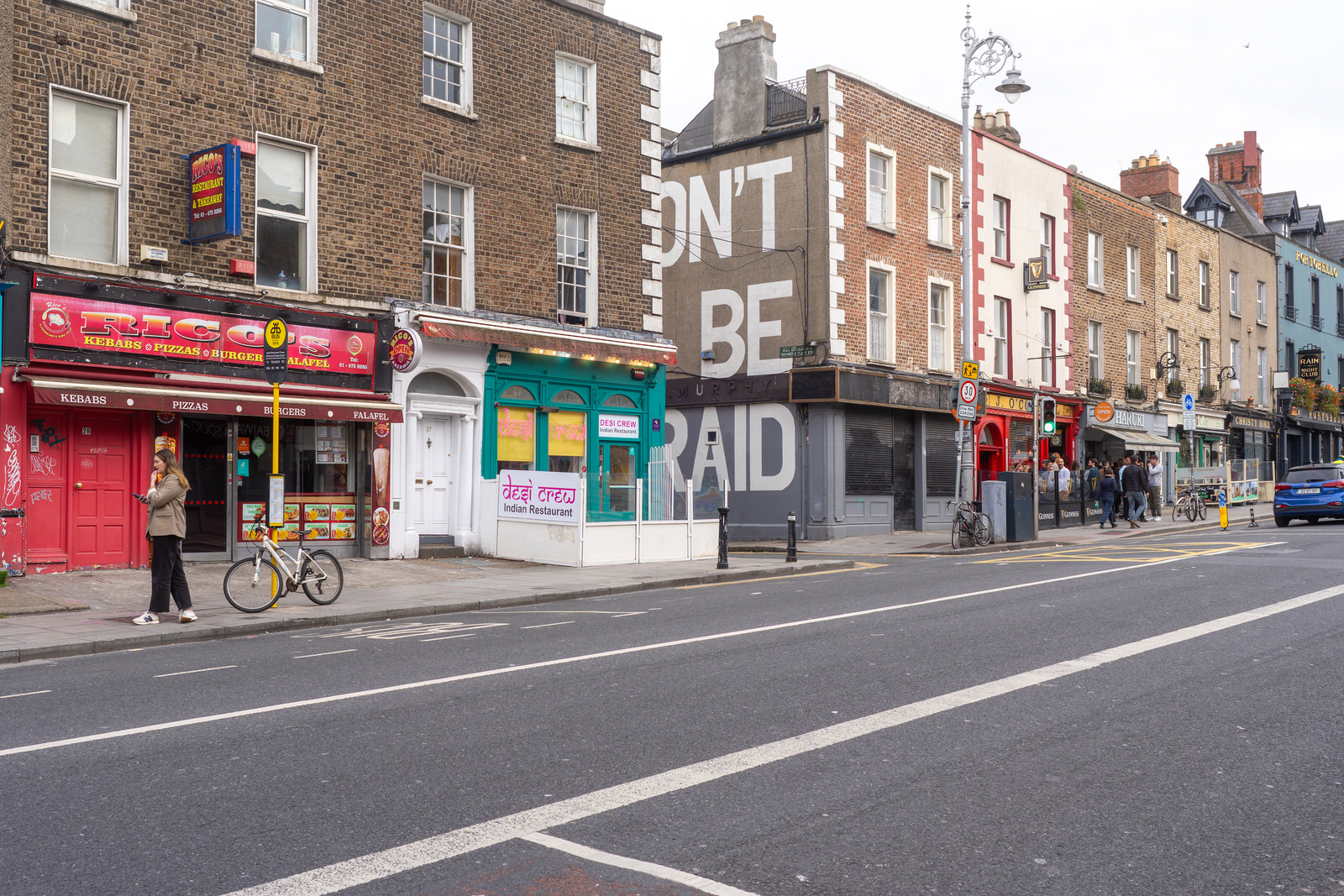MARCH 2025
WILLIAM'S PHOTO DIARY
NEW SEARCH OPTION
USE TEXT BOX ABOVE
HENRIETTA PLACE AND YARNHALL STREET [MAJOR REDEVELOPED IS EXPECTED WITHIN MONTHS]
Disappearing Dublin: Henrietta Place and Yarnhall Street (Redevelopment in Progress)
The Bolton Street and Yarnhall Street area of Dublin 1 is undergoing a rapid transformation, driven primarily by the expansion of Technological University Dublin's (TU Dublin) Grangegorman campus. This change is most visible in the surge of student accommodation construction, reshaping the local landscape.
A significant development is underway at Henrietta Place, behind 51/52 Bolton Street. Here, a new six-storey apartment building, encompassing approximately 860 sq.m, is being erected. It will feature nine apartments, with a basement for storage and services. The ground floor will house an entrance lobby, bicycle parking, bin storage, an ESB switch room, and vehicle access to a new service courtyard with three parking spaces. The upper floors will comprise a mix of one and two-bedroom apartments, culminating in a two-bedroom apartment and a communal roof terrace on the top floor.
Directly opposite Bolton Street College, a substantial redevelopment opportunity exists at 53-55 Bolton Street and 2-3 Yarnhall Street. This 0.27-acre site, zoned Z4 (Key Urban Villages) under the Dublin City Development Plan 2022-2028, is offered for sale at €2,950,000. The site comprises three distinct elements:
53-54 Bolton Street: A two-storey over basement building, constructed in the mid-1980s, with a brick front elevation and approximately 1,248 sq.m of accommodation. It boasts a 17m frontage to Bolton Street and rear access via Henrietta Place. Currently used as a retail stationery shop with workshop/warehousing and storage, it includes staff toilets, a kitchen area, a rear yard loading bay, and a lift.
2-3 Yarnhall Street (Ardiff Mahon Print Works): A historically significant, protected cut-stone building, dating from the late 1920s. Arranged over three floors with a set-back fourth floor, it formerly housed the Ardiff Mahon Print Works. Records indicate "Mahons Printing Works Limited" was established in 1980, but recent information confirms the company has entered liquidation. This building, connected to 54 Bolton Street on multiple floors, is currently unoccupied and requires refurbishment. It has a total accommodation area of approximately 972.7 sq.m. The building is listed on Dublin City Council's record of protected structures (RPS Ref no. 8664).
55 Bolton Street: A vacant corner site, adjoining the Kings and Ardiff Mahon Print buildings, with frontages of 13m to Bolton Street and 18m to Yarnhall Street, covering approximately 201 sq.m.
The entire site, encompassing approximately 1,096 sq.m, represents a prime development opportunity, situated on the edge of the expanding Grangegorman campus and amidst the growing presence of student accommodation. The Ardiff Mahon Print Works building, in particular, offers a unique blend of historical significance and redevelopment potential within this evolving urban landscape.
Today's Camera: Sigma DP1 Quattro
As I evaluate my camera needs for the next twelve months, I've been revisiting my existing equipment. Today, I used the Sigma DP1 Quattro, a camera capable of producing exceptional results under optimal conditions. However, its performance is highly variable, with battery life sometimes limited to 40 shots, and image quality heavily dependent on weather and other factors. Processing the images can also be challenging.
Over the years, I've acquired a range of Sigma cameras, beginning with the SD9, which I found to be profoundly disappointing. After a brief period with Canon, I encountered issues with a faulty 1DsMkIII. Subsequently, I transitioned to Sony mirrorless cameras, allowing me to continue using my Canon lenses. I currently own the Sony NEX-5, VG10E, NEX-7, A7R, A7RIII, and A7RIV. I opted against the A7RV, finding the upgrade benefits minimal. Despite my negative experience with the Sigma SD9, I own a collection of Sigma cameras, including the original DP series, the Merrill series, and the Quattro series, drawn to their Foveon sensors. My favourite was the Merrill Series, but all Sigma cameras I own share flaws like battery issues, RAW format challenges, and limited usability beyond ISO 100.
Recently, Sigma released the BF, which has generated both positive and negative feedback due to its limitations and striking design. I've placed an order, though production is limited to nine units per day, so I doubt I'll ever receive one.
I'm now updating my equipment and have ordered a Sony A1 II and a Fuji GFX100RF, choosing it over the Leica Q3. However, I may revert to the Leica if delivery delays persist, as it's readily available from my local dealer.
PIGEONS ABOUT TO DEPART THE PIGEON HOUSE AT 30 MANOR STREET [PAINT-A-BOX STREET ART]
The Pigeon House: A Local History
The property at 30 Manor Street is situated in Stoneybatter, Dublin 7. It was sold in March 2024. However, the site's history as "The Pigeon House," and the issues surrounding it, predate this sale and are crucial to understanding the urban pigeon problems in the area. For several years, the residence was a focal point of concern due to a local resident consistently feeding feral pigeons, resulting in a large flock gathering at the property.
Online discussions in community forums, such as Reddit, corroborate this long-standing issue. Local residents described an "old guy" living at the address who fed pigeons and cats multiple times daily, an activity that also attracted rats. The house was commonly referred to by locals as either "The Pigeon House" or the "rat house," highlighting the negative perception of the situation within the neighbourhood. Accounts suggest that the resident scattered birdseed in the front garden, further contributing to the large number of pigeons congregating there. Some neighbours recounted unpleasant experiences, including a strong smell emanating from the house and negative interactions with the resident when concerns were raised. The consistent local awareness and negative descriptions associated with the property over an extended period underscore the significant and persistent nature of the problem for the surrounding community. This issue was not a recent development but had been ongoing for several years, with mentions dating back to at least November 2017, as indicated by a reference to a Dublin Inquirer article from that time. The persistence of the problem suggests that initial attempts to manage the situation, if any, were ineffective in resolving the concerns of local residents.
Dublin City Council's Legal Action
In response to numerous complaints from residents regarding the large pigeon population at 30 Manor Street, Dublin City Council initiated legal proceedings against a local resident, William Garnermann, in November 2019. The council's action was based on allegations that Mr Garnermann was causing a nuisance by feeding feral pigeons at his home and the surrounding area on Manor Street in Stoneybatter, Dublin 7. The legal basis for this prosecution was the Local Government (Sanitary Services) Acts, with the council further alleging that by providing food, Mr Garnermann was encouraging the pigeons to reside at his property. Before initiating legal action, Dublin City Council erected signs in the vicinity of 30 Manor Street stating, "Do Not Feed Pigeons Or Other Birds By Order". The local authority's decision to pursue legal action indicates that the issue was considered a significant problem impacting the local community, likely due to persistent complaints from residents concerned about the nuisance and potential health implications.
The civil action taken by Dublin City Council against Mr Garnermann was ultimately withdrawn in March 2022. The council's barrister informed the court that the case could be struck out, with the stated reason being "to allow continued implementation of settlement terms". While the specific details of these settlement terms are not explicitly available in the provided material, a comment on Reddit suggests that an agreement was reached where the resident would refrain from scattering seeds and instead use feeders. However, there is no confirmation within the provided information regarding whether this agreement was consistently followed or its long-term effectiveness in mitigating the pigeon problem. The dropping of the legal case suggests that a compromise or understanding was reached between Dublin City Council and Mr Garnermann. This could have been due to various factors, such as a belief that the agreed-upon settlement terms would adequately address the nuisance, or a strategic decision to avoid a potentially protracted and costly legal battle. The reliance on anecdotal evidence from online forums for details of the settlement highlights the challenges in accessing comprehensive information about the resolution of such local disputes.
"Pigeons of Discontent": Diverse Perspectives on an Urban Issue
The documentary film Pigeons of Discontent, directed by Paddy Cahill, offers a glimpse into the various perspectives surrounding the pigeon population in the Stoneybatter neighbourhood, with a particular focus on the situation at "The Pigeon House". Inspired by a report in the Dublin Inquirer by Cónal Thomas, the film explores the opinions of local residents regarding the pigeons. Despite its title, one source describes the documentary as "essentially a celebration of the wee flockers," suggesting a potentially sympathetic or at least nuanced portrayal of the birds. The inclusion of Mary Barnecutt from the band Mary and the Pigeons, who also provided music for the film, further hints at a possibly positive perspective towards the pigeons within the documentary.
The title Pigeons of Discontent itself implies that there are differing viewpoints within the community regarding the presence and impact of the local pigeon population. It is likely that the documentary presents a contrast between residents who were negatively affected by the large number of pigeons congregating at 30 Manor Street and those who may have had a more neutral or even positive view of urban wildlife. While the provided information does not detail the specific content of the film regarding health concerns, it is plausible that the documentary touches upon the issues raised by some residents about the potential health hazards associated with the pigeons. Given that the documentary is a short film, with a runtime of approximately eight minutes, its exploration of these complex issues may be somewhat limited in depth. Nevertheless, it serves as a valuable record of the diverse social perspectives existing within the Stoneybatter community concerning the presence of feral pigeons and the specific situation at "The Pigeon House".
The Science of Feral Pigeons and Public Health
Feral pigeons are a common sight in urban environments worldwide, and their presence often raises concerns about public health. These birds thrive in cities due to a combination of factors, including readily available food sources, such as discarded food and intentional feeding by humans, and an abundance of nesting sites provided by buildings and other urban structures. The absence of natural predators in many urban areas also contributes to their successful proliferation. Consequently, feral pigeons are often perceived as pests and are sometimes referred to disparagingly as "rats with wings," reflecting concerns about their potential to carry and spread diseases.
Scientific research has indeed identified feral pigeons as potential carriers of various pathogens, including viruses, bacteria, fungi, protozoa, and parasites. One analysis indicated that feral pigeons could harbour as many as 60 different human pathogenic organisms, although only a small number of these are routinely transmitted to humans. The World Health Organisation has also highlighted fungal pathogens carried by pigeons as a potentially underestimated human health hazard. While the variety of pathogens that pigeons can carry might seem alarming, it is important to note that the actual frequency and likelihood of transmission to humans, particularly those with healthy immune systems, are generally considered low. The distinction between a bird harbouring a pathogen and routinely transmitting it to humans is crucial in assessing the true public health risk.
Specific Diseases and Health Risks Linked to Feral Pigeons
Contact with feral pigeons and their droppings can potentially lead to several diseases and health risks. These include fungal infections such as histoplasmosis, caused by a fungus that grows in pigeon droppings and is contracted through the inhalation of airborne spores. Symptoms of histoplasmosis can include fatigue, fever, and chest pains. Another fungal disease associated with pigeon droppings is cryptococcosis, which poses a higher risk to individuals with compromised immune systems. Pigeons can also carry candidiasis, a yeast infection.
Bacterial diseases linked to pigeons include psittacosis (also known as ornithosis or parrot fever), caused by bacteria that can be transmitted through contact with pigeons or their droppings. Symptoms can range from mild flu-like illness to pneumonia. Salmonellosis is another bacterial infection that can be spread through pigeon faeces, potentially causing gastrointestinal issues. While pigeons can carry the bacteria responsible for tuberculosis, transmission to humans is considered rare. E. coli is another bacterium that can be found in pigeon droppings and may cause illness if ingested. Additionally, the bacterium responsible for listeriosis has been isolated from pigeons.
Beyond specific diseases, feral pigeons can harbour various parasites, such as mites and lice, which can occasionally infest human dwellings and cause bites. Exposure to pigeon feathers and droppings can also trigger allergies and respiratory problems like alveolitis in susceptible individuals. Furthermore, the acidic nature of pigeon droppings can damage property, eroding stonework, metal structures, and blocking gutters. The presence of a large pigeon population, especially when associated with feeding, can also lead to the attraction of other pests, such as rats and mice, as they scavenge for uneaten food. Finally, accumulations of pigeon droppings on walkways can create slippery surfaces, posing a safety hazard.
It is important to reiterate that while feral pigeons can carry these potential health risks, the actual incidence of disease transmission to humans remains relatively low, particularly for individuals with healthy immune systems. Individuals with compromised immune systems, however, are at a higher risk of developing infections from these pathogens. Transmission often occurs through the inhalation of dust from dried droppings, particularly during cleaning activities.
Urban Environment as a Catalyst: Pigeon Populations in Dublin
Urban environments like Dublin provide a multitude of factors that enable feral pigeons to thrive and maintain substantial populations. One of the most significant factors is the readily available food supply. Cities generate large amounts of food waste from restaurants, cafes, fast food outlets, and general litter, which pigeons can easily access. Additionally, the intentional feeding of pigeons by members of the public in parks and other areas further supplements their diet and encourages congregations.
Urban landscapes also offer abundant nesting sites for pigeons. Tall buildings with ledges, crevices, and sheltered areas mimic the rocky cliff faces that are the natural habitat of their ancestors. These structures provide protection from the elements and predators, allowing pigeons to breed successfully. Compared to rural environments, urban areas typically have a reduced presence of natural predators for pigeons, further contributing to their survival rates. Pigeons are also highly adaptable to a variety of urban conditions. They are omnivorous, with a diet that can include grains, seeds, discarded food, and even insects. This dietary flexibility allows them to exploit various food sources available in the urban environment. The consistent availability of food and suitable nesting sites enables pigeons to engage in year-round breeding, leading to rapid increases in their population.
In the specific context of Dublin, the high density of restaurants, cafes, and other food-related businesses in areas like Stoneybatter likely provides a substantial and consistent food source for feral pigeons. The architectural styles prevalent in many parts of the city, with numerous older buildings featuring ledges, rooftops, and other potential nesting locations, also contribute to a favourable environment for pigeon habitation. Therefore, the urban characteristics of Dublin, like many other cities, create an ecological niche that allows feral pigeon populations to thrive.
Street Art as Commentary: The Manor Place Pigeon Painting
As you can see from my photographs, there is currently a Paint-A-Box street art installation near 30 Manor Street depicting pigeons leaving a rooftop. This artwork is part of the Dublin Canvas project, an initiative that aims to add colour and art to the city by transforming ordinary utility boxes into public canvases. The project is inclusive, open to anyone over the age of 18 who can paint, and seeks to brighten up the urban landscape. Artists submit their ideas, and if selected, they are given the opportunity to paint a designated utility box. The Dublin Canvas project typically runs throughout the summer months.
The presence of a street art piece featuring pigeons in close proximity to "The Pigeon House" raises questions about its potential connection to the situation at 30 Manor Street. It is conceivable that the artwork was created as a direct response to the well-known pigeon issue at the nearby residence. Street art often serves as a form of social or artistic commentary on local events and issues. In this case, the depiction of pigeons leaving a rooftop could be interpreted in various ways. It might reflect the "discontent" mentioned in the documentary title, perhaps symbolising a desire for the pigeons to depart. Alternatively, it could be a more neutral observation of the prominent pigeon presence in the area, or even a subtle artistic nod to the local fauna. It is worth noting that pigeons are not an uncommon subject in Dublin art, as evidenced by the availability of pigeon-themed prints and artwork depicting Dublin scenes. Other artistic representations of "The Pigeon House" itself also exist, suggesting that the location and its avian inhabitants have captured the local imagination. Without specific information from the artist about their intent, the precise connection between the Manor Place pigeon painting and the situation at 30 Manor Street remains open to interpretation. However, its location suggests a potential link to the local awareness and discussion surrounding the significant pigeon population in that part of Stoneybatter.
Synthesising the Findings: Assessing the Health Risk at 30 Manor Street
To determine if the situation at 30 Manor Street posed a significant health risk in Dublin, it is necessary to integrate the specific details of this case with the broader scientific understanding of the health hazards associated with feral pigeons. Several factors at "The Pigeon House" likely contributed to an elevated potential for health risks. The intentional feeding of pigeons led to a large concentration of birds at the property. This high density of birds would have resulted in a corresponding accumulation of droppings on the property and potentially on adjacent public areas, as reported by neighbours. Furthermore, the practice of feeding pigeons also reportedly attracted other pests, such as rats, which themselves can pose health risks. The concerns expressed by neighbours regarding unsanitary conditions and the potential for disease transmission further underscore the perceived risks associated with the situation.
However, when these localised factors are weighed against the general scientific consensus, it becomes apparent that while the potential for increased exposure to pathogens existed at 30 Manor Street, whether this translated into a significant public health crisis affecting a large segment of the Dublin population is less clear. The scientific literature indicates that the risk of disease transmission from feral pigeons to humans is generally low for healthy individuals. Infections typically occur through direct contact with droppings or, more commonly, through the inhalation of dust from dried droppings, especially in situations involving cleaning or close proximity to large accumulations. While the high concentration of pigeons at "The Pigeon House" likely resulted in a higher load of potential pathogens in the immediate vicinity, there is no readily available evidence to suggest that this led to a widespread outbreak of pigeon-related diseases in the Stoneybatter area or across Dublin. The numerous complaints from residents appear to have been primarily driven by the nuisance aspects of the situation, such as noise, droppings fouling public spaces and private property, and the attraction of other vermin, rather than widespread reports of illness directly linked to the pigeons. Therefore, while the situation at 30 Manor Street likely posed localised health concerns, it is difficult to definitively conclude from the available information that it constituted a significant public health risk in the broader context of Dublin. The primary impact appears to have been on the immediate neighbours and the local amenity of the area.
THIS WAS THE MANOR PICTURE HOUSE [WAS ALSO KNOWN AS THE MANOR CINEMA]
The building on Manor Street, Dublin, known variously as the Manor Picture House and the Manor Cinema, holds a significant place in the city's history. Originally opened in 1914 as the Manor Street Picture House, it later became the Palladium Cinema in 1934 and the Broadway Manor Street Cinema around 1940. Despite these official changes, "Manor Cinema" remained the popular name, particularly around 1920, suggesting a shift in common usage.
Built as a cinema, not a converted house, it was a notable early example of dedicated cinema architecture in Dublin. Designed for 630 patrons, its architectural features included a glazed iron canopy, a higher parapet, and distinct fenestration, setting it apart from neighboring buildings.
The Manor Cinema served as a vital community entertainment hub, opening as the Manor Cinema on May 10, 1920, with silent films and a live, all-female orchestra. By the 1940s, it had adapted to sound films with an RCA Photophone system. Its architectural design, featuring rendered walls, pilasters, and a vaulted ceiling, contributed to its appeal.
Operating from 1914 to 1956, the cinema's closure was likely due to a combination of factors, including competition from larger city-centre cinemas, the economic recession of 1955-1956, and demographic shifts. While television's rise played a role, its impact in 1956 was likely secondary to these other issues.
The Manor Cinema played a crucial role in the social and cultural life of Stoneybatter, offering escapism and communal experiences. Its legacy reflects a time when cinema was central to community life.
Today, the building at 60-61 Manor Street, now the Stoneybatter Community Centre, retains architectural features that recall its cinematic past. Though the auditorium is divided, elements like the staircase and projection room remain, preserving its historical character.
VIEWS OF THE JAMES JOYCE BRIDGE [CONNECTING BLACKHALL PLACE TO THE SOUTH QUAYS]
The James Joyce Bridge, located in Dublin, Ireland, is a striking architectural feature that spans the River Liffey. Here's a breakdown of its key features and why it might interest a visitor:
Architectural Significance:
Designed by the renowned Spanish architect Santiago Calatrava, the bridge is a testament to modern engineering and design. Its distinctive, curved steel arches create a visually stunning silhouette against the Dublin cityscape.
The bridge's design is a tied-arch structure, and its white steel construction provides a bright, contemporary contrast to the older, more traditional bridges along the Liffey.
Location and Context:
The bridge connects the south quays to Blackhall Place on the north side of the river. This location places it within Dublin's city centre, making it easily accessible to visitors exploring the area. Notably, the bridge's southern end is near 15 Usher's Island, the setting for James Joyce's short story "The Dead," adding a literary layer to its significance. The bridge being named after James Joyce, adds to the literary connection. The bridge is also located near the Law society buildings, on the north side of the river.
Visitor Interest:
The bridge offers excellent pedestrian walkways, allowing visitors to enjoy scenic views of the River Liffey and the surrounding cityscape.
Its unique design makes it a popular spot for photography, particularly at sunset or when illuminated at night.
It also aids in easing traffic flow within the city of Dublin.
LET ME TELL YOU ABOUT THE OLDEST LETTER BOXES IN IRELAND [THIS ONE DATES BACK TO THE 1850s]
Let's explore the fascinating history of Ireland's oldest letter boxes, some of which date back to the 1850s. These enduring relics not only serve as functional pieces of postal history but also add a touch of elegance to their surroundings.
The title of Ireland's oldest surviving letter box is a subject of some debate. One strong contender is the Ashworth Box, currently housed in the National Museum at Collins Barracks. This example, dating from the 1850s, is likely the oldest in existence, although it is no longer in active use. Descriptions of this box sometimes refer to it as wall-mounted, which contradicts the free-standing example displayed at Collins Barracks. It is possible that differing versions of the Ashworth box were produced.
Another notable example is the hexagonal Penfold post box, located in New Ross, County Wexford. This distinctive cast-iron pillar box, dating from around 1866, stands outside the Royal Hotel on North Street. While commonly referred to as a 'Penfold Hexagonal', it was actually designed by John Wormham Penfold (1828-1909) as the 'New Standard Letter Box'. Its design may have been influenced by octagonal post boxes commissioned in 1852. Manufactured by Cochrane Grove and Company of Dudley, these hexagonal boxes were relatively rare in both Ireland and Britain.
The hexagonal design of the Penfold boxes proved problematic, as letters occasionally became lodged in the corners. This led to the adoption of the more familiar cylindrical post box, which eliminated this issue.
It's important to note that many of Ireland's oldest surviving post boxes were originally painted green, later being repainted in the iconic British 'pillarbox red'. Traces of this original green paint can still be found on some examples. Following independence, Ireland reverted to its own distinct green for its post boxes.
Furthermore, accurately dating these historical artefacts can be challenging. Often, only the manufacturing date can be confirmed, rather than the precise year of installation.
OH YES THERE ARE AMERICAN CARS IN THE EU [THIS RED FORD WAS PARKED ON MOUNTJOY STREET]
A former manager from London, working with me in Dublin, once remarked on the number of 'foreign' cars in Ireland. It wasn't until someone pointed out that Ireland is an independent nation, not part of the UK, that she realised her error. Her initial perception stemmed from a lingering assumption that 'foreign' meant 'non-British,' a common oversight for those accustomed to the UK's previous relationship with Ireland. This anecdote, though lighthearted, underscores how easily assumptions about national identity and belonging can shape our perceptions.
However, Ireland has a significant, albeit often overlooked, history with the motor industry. Notably, Ireland played a crucial role in the early development and adoption of the automobile.
Ford's First Overseas Venture: Henry Ford established his first overseas manufacturing plant in Cork in 1917, marking a pivotal moment in both Ford's global expansion and Ireland's industrial history.
A Tragic First: In 1869, Mary Ward, an Irish scientist, became the world's first recorded automobile fatality, a somber reminder of the early risks associated with motorised transport.
The Pneumatic Tire Revolution: John Boyd Dunlop, hailing from Belfast, Northern Ireland, revolutionised transportation with his 1888 invention of the pneumatic tire. His first factory was then located in Dublin.
It is interesting to note, that even today in the EU, American cars can be found, as evidenced by their presence on streets such as Mountjoy Street in Dublin.
These historical connections, along with the everyday reality of diverse car brands on Irish roads, paint a rich and complex picture of Ireland's relationship with the automobile.
THE FOUR MASTERS PARK IS NOW OPEN TO THE PUBLIC [ORIGINALLY KNOWN AS THE MATER PLOT]
The Four Masters Park, originally known as the Mater Plot, on Eccles Street, Dublin, has now been opened to the public. This small, formally laid-out park provides a picturesque foreground to the Mater Misericordiae University Hospital and St. Joseph’s Church.
For many years, the park remained closed to the public, despite Dublin City Council maintaining it in excellent condition. The land is owned by the Mater Hospital, which initially restricted access. Sheila Ahern, a dedicated committee member of the Berkeley Road Area Residents Association, spearheaded a long-standing campaign to open the park. Her efforts culminated in a motion proposed by Green Party Councillor Janet Horner at a Central Area meeting on 8th March 2022. The motion called on the Mater Hospital to grant public access, and shortly thereafter, a hospital spokesperson indicated their intention to facilitate this 'in the near future'.
The park's history is intertwined with the now-cancelled Metro North project. Historical records indicate plans to integrate the park with a 'Mater Stop' on the original Metro North line. A partially constructed underground structure, often referred to as a 'box', remains beneath the hospital grounds, a remnant of these abandoned plans. The shift to the MetroLink project and a revised route ultimately led to the cancellation of the original Metro North plans.
Today, Sunday 9th March 2025, the park’s Eccles Street gate was found unlocked, revealing a refurbished space with new railings protecting the historic High Cross and the 'Healing Hands' sculpture.
The park features two significant artworks:
The Four Masters Memorial (1876): This High Cross, situated on a large plinth, commemorates the Franciscan friars of Donegal town who compiled the 'Annals of the Four Masters' between 1632 and 1636. Commissioned by Sir William Wilde (1815-1876), father of Oscar Wilde, the memorial reflects his deep interest in Irish history and his active role within the Royal Irish Academy. The sculpture was created by James Cahill (d. 1890), a Dublin-based sculptor who trained under John Hogan. Cahill also created the statue of Daniel O'Connell in Ennis.
The Healing Hands (2000): This hollow bronze sphere, containing an eternal flame and supported by a tree-trunk style pedestal, was erected to celebrate the third millennium. It symbolises the healing ministry of Christ and the care provided by the Mater Hospital, founded by the Sisters of Mercy in 1861. The eternal flame represents God's everlasting love. Artist Tony O’Malley, originally from Tipperary and based in West Cork, created the sculpture, incorporating handprints from patients and staff at the hospital. This person-centric design reflects the collaborative nature of healing. O'Malley's previous work, 'Universal Links for Human Rights,' influenced the creation of 'The Healing Hands'.
The reopening of the Four Masters Park marks a significant moment for the local community, providing a green space for residents and visitors to enjoy.
OH YES THERE ARE AMERICAN CARS IN THE EU [THIS RED FORD WAS PARKED ON MOUNTJOY STREET]
A former manager from London, working with me in Dublin, once remarked on the number of 'foreign' cars in Ireland. It wasn't until someone pointed out that Ireland is an independent nation, not part of the UK, that she realised her error. Her initial perception stemmed from a lingering assumption that 'foreign' meant 'non-British,' a common oversight for those accustomed to the UK's previous relationship with Ireland. This anecdote, though lighthearted, underscores how easily assumptions about national identity and belonging can shape our perceptions.
However, Ireland has a significant, albeit often overlooked, history with the motor industry. Notably, Ireland played a crucial role in the early development and adoption of the automobile.
Ford's First Overseas Venture: Henry Ford established his first overseas manufacturing plant in Cork in 1917, marking a pivotal moment in both Ford's global expansion and Ireland's industrial history.
A Tragic First: In 1869, Mary Ward, an Irish scientist, became the world's first recorded automobile fatality, a somber reminder of the early risks associated with motorised transport.
The Pneumatic Tire Revolution: John Boyd Dunlop, hailing from Belfast, Northern Ireland, revolutionised transportation with his 1888 invention of the pneumatic tire. His first factory was then located in Dublin.
It is interesting to note, that even today in the EU, American cars can be found, as evidenced by their presence on streets such as Mountjoy Street in Dublin.
These historical connections, along with the everyday reality of diverse car brands on Irish roads, paint a rich and complex picture of Ireland's relationship with the automobile.
A PAINT-A-BOX STREET ART TRIBUTE TO LILY AND LOLLY YEATS [LOCATED NEAR ST NAHI'S CHURCH]
Lily and Lolly Yeats: Life, Work, and Family Connections
Lily (Susan) Yeats (1866-1949) and Lolly (Elizabeth) Yeats (1868-1940) were integral figures in the Irish Arts and Crafts movement. Sisters of the renowned poet William Butler Yeats and artist Jack Butler Yeats, they were born into a highly creative family. Their parents were John Butler Yeats, an artist, and Susan Yeats (née Pollexfen). The family's history encompassed periods in Ireland (Sligo, Dublin) and England (London), and they faced financial hardships, which spurred the sisters to become industrious.
The artistic and literary atmosphere of their family significantly influenced their creative paths. They were exposed to the Arts and Crafts movement, notably through connections with figures like William Morris.
Their contributions are particularly evident in Dundrum, County Dublin:
Dun Emer and Cuala: The sisters were deeply involved in the Dun Emer Industries, founded in Dundrum in 1902. Dun Emer was a crafts collective that aimed to produce beautiful Irish-made goods.
Following a separation from Dun Emer, they established the Cuala Press and Cuala Industries in nearby Churchtown. Lily specialised in embroidery, while Lolly focused on printing and art teaching.
St. Nahi's Church:
Lily and Lolly Yeats are interred in the graveyard of St. Nahi's Church in Dundrum, marking their final resting place.
Within St. Nahi's Church, they created altar tapestries, showcasing their artistic skills.
Artistic Contributions:
Lily's expertise in embroidery was highly regarded, and she worked with notable figures in the Arts and Crafts movement.
Lolly's work in printing, particularly with the Cuala Press, contributed significantly to the Irish literary revival, publishing works by their brother W.B. Yeats and other Irish writers.
Their work was a large contribution to the Irish cultural and literary revival. They where both very talented women, who made great contributions to the arts and crafts movement.
THE FAMILY BY WILLIAM W CHEWA [GREEN OPAL SERPENTINE STONE]
Holy Cross Church in Dundrum, in preparation for the 2018 World Meeting of Families in Dublin, underwent a significant restoration, including the creation of a new Pastoral Centre. To commemorate this event, the parish acquired a modern sculpture by Zimbabwean artist William W. Chewa. Originally titled "The Christian Family" (2015), and carved from Green Opal, a type of Serpentine stone, the piece now bears a bronze plaque stating "The Family (2016)". It remains unclear whether this signifies a renaming or the existence of multiple copies.
William W. Chewa, renowned for his expressive stone carvings, began his artistic journey in Zimbabwe at a young age. His work often reflects the essence of human connection, and "The Family" is no exception, capturing the love and unity inherent within familial bonds. Green Opal, chosen for its vibrant hue and workable texture, is commonly used in Zimbabwean sculpture. The intricate process of shaping this stone involves specialised tools, resulting in detailed and visually appealing forms. The sculpture's verdant colour further enhances its symbolic meaning, aligning perfectly with the World Meeting of Families' theme, "The Gospel of the Family: Joy for the World."
This piece, prominently displayed in the church grounds near Emmaus House, serves as a permanent reminder of the centrality of love within the Christian family. Its acquisition was facilitated by Fr. Kieran, demonstrating the community's dedication to celebrating family life.
The World Meeting of Families itself serves several vital purposes: strengthening families through resources and support, promoting the Gospel of the Family, fostering dialogue and understanding between diverse families, and celebrating the beauty and importance of family life. This event, like Chewa's sculpture, underscores the family as a source of love, support, and joy.
THE HOLY CROSS CHURCH IN DUNDRUM [ORIGINALLY CONSTRUCTED 1878]
Notably, Blessed Columba Marmion served as a curate in the church from 1881 to 1882.
Holy Cross Church in Dundrum, Dublin, stands as a testament to the evolving nature of community and faith. Originally constructed in 1878, replacing an earlier chapel from 1837, the church has witnessed significant transformations. Architect G.C. Ashlin designed the initial structure, and the parish of Dundrum was subsequently established, separating from the larger Booterstown parish. A mid-20th-century expansion in 1956 substantially increased the church's size, reflecting the growing local population. Notably, Blessed Columba Marmion served as a curate here from 1881 to 1882, adding to the church's historical significance.
However, the church's current interior appearance is primarily the result of a comprehensive refurbishment project completed in recent years, approximately around 2016 and 2017. This extensive renovation, born from an architectural competition, dramatically modernised the interior, creating a bright and welcoming space. The project included the construction of new parish offices and a pastoral centre, integrating modern facilities with the existing historical structure. Furthermore, the choir balcony was extended, the organ restored and upgraded, and the baptismal area relocated to the centre of the church, symbolising its central role in the community. This blending of historical architecture with contemporary design reflects the parish's commitment to providing accessible and functional spaces, ensuring Holy Cross Church remains a vibrant and relevant focal point for the Dundrum community.
THE HALFPENNY BRIDGE [OFFICIALLY KNOWN AS THE LIFFEY BRIDGE]
The Halfpenny Bridge, officially known as the Liffey Bridge, is an iconic pedestrian bridge spanning the River Liffey in Dublin, Ireland. Its origins date back to 1816, when it was constructed as a replacement for the ferry service operated by William Walsh. Walsh, who owned the ferry, was granted the right to build the bridge on the condition that he charged a halfpenny toll for each person crossing, hence its popular name.
The bridge's elegant design, featuring a series of cast iron arches, has made it a beloved landmark and a favourite subject for photographers. Initially, the toll was intended to offset the cost of construction and maintenance. However, the toll remained in place until 1919, long after the bridge's initial costs were recouped.
The structure is comprised of decorative cast iron, with latticework sides and ornate lamps, giving it a distinctive Victorian-era aesthetic. It's a testament to the craftsmanship of the time, and its enduring presence reflects its importance to Dublin's history and urban fabric.
In recent years, the Halfpenny Bridge has undergone restoration work to preserve its structural integrity and aesthetic appeal. It remains a vital link for pedestrians crossing the Liffey, connecting the bustling areas of Temple Bar and the north quays. The bridge's central location and its status as a cultural icon make it a popular meeting point and a symbol of Dublin itself.
SEPIAN BLUE BY NASSER AZAM 24 FEBRUARY 2025 [ORIGINALLY LOCATED AT THE MAIN ENTRANCE TO THE BOTANIC GARDENS]
Located within the landscape of the National Botanic Gardens in Dublin, "Sepian Blue" stands as a captivating testament to the power of bronze sculpture. This monumental work by Nasser Azam, relocated to a prominent position within the gardens, was originally exhibited as part of Sculpture in Context, Ireland's premier showcase of public sculpture [Note: the 2024 exhibition was cancelled].
I can confirm that Sculpture in Context is indeed planned to return in 2025 to the National Botanic Gardens. According to their official website, Sculpture in Context is committed to exhibiting again in 2025. They are also planning a series of fringe events alongside the main exhibition. It seems they used the time after the 2024 cancellation to restructure and secure funding, ensuring the festival can continue with its usual ambition and scale.
So, it's good news for sculpture lovers! "Sepian Blue" will have company in the Gardens once again.
Sculpture in Context: A Legacy of Public Art
Sculpture in Context, held annually at the Botanic Gardens, provides a unique platform for artists to display their work amidst the garden's natural beauty. Sadly, the 2024 edition was cancelled due to unforeseen circumstances. However, "Sepian Blue" made such a lasting impression that it was acquired for the Botanic Gardens' permanent collection, a testament to its artistic merit and enduring appeal.
Nasser Azam: A Life in Art
Born in Jhelum, Pakistan, in 1963, Nasser Azam moved to London with his family at the age of seven. His artistic journey began in 1980 while pursuing a business degree at the University of Birmingham. Early recognition came swiftly with a feature in a 1983 BBC documentary. Azam's artistic development was further enriched by extensive travels across Japan, America, and Europe, broadening his perspectives and influencing his creative vision.
In 2007, Azam was appointed Artist-in-Residence at the County Hall Gallery in London, culminating in a retrospective exhibition of his work. He gained further acclaim for his "Anatomica" series, a powerful exploration of the human form that merges imagery from fashion magazines and medical textbooks.
Sculpting on a Grand Scale
Azam's sculptural achievements are equally remarkable. In 2012, he unveiled "Athena," a breathtaking bronze sculpture standing over twelve metres tall at London City Airport. This monumental work holds the distinction of being the tallest bronze sculpture in the United Kingdom, a symbol of strength and grace against the modern architectural backdrop.
His other notable sculptures include "The Dance," a large bronze piece dynamically capturing movement and unveiled on London's South Bank in 2008. With "Sepian Blue" now gracing the National Botanic Gardens of Ireland, Azam's artistic legacy extends across borders and mediums.
Artistic Style and Enduring Influence
Azam's semi-abstract painting style, often drawing comparisons to Willem de Kooning, is characterized by biomorphic forms and expressive gestural marks that subtly encode the human figure. His paintings, typically employing a restricted palette, possess a profound evocative power, inviting viewers to contemplate the complexities of the human condition.
In 2010, Azam acquired the Morris Singer Art Foundry, subsequently relaunching it as the Zahra Modern Art Foundry. This significant move underscores his dedication to preserving traditional sculptural techniques and fostering the future of this art form.
I have not seen the menu so I can only guess as to what you can expect until I actually have a meal there [note I did attend the opening and was impressed by the sample dishes]
"Desi Crew" is aiming to bring the vibrant and diverse flavours of South Indian street food to Dublin! Here's what you might expect if you visit:
Food:
Focus on South Indian cuisine: Expect dishes from the regions of Tamil Nadu, Kerala, Karnataka, and Andhra Pradesh. Think dosas (thin, crispy crepes made from fermented batter), idlis (steamed rice cakes), vadas (savory lentil doughnuts), and uttapams (thicker pancakes with toppings).
Street food style: This likely means the food will be casual, flavourful, and perhaps served in a way reminiscent of street stalls in India.
Variety of chutneys and sambars: South Indian food is known for its accompanying sauces and dips. You'll probably find coconut chutney, tomato chutney, sambar (a lentil-based vegetable stew), and perhaps even some more unique regional chutneys.
Spice levels: South Indian food can be spicy, but a restaurant catering to a wider audience will likely offer a range of spice levels to suit different palates. Don't hesitate to ask for your preferred level of heat.
Fresh ingredients: Given the emphasis on street food, you can hope for fresh, vibrant ingredients and bold flavours.
Atmosphere:
Casual and lively: Street food is all about a bustling, energetic atmosphere. The restaurant might have bright colors, lively music, and a casual setting.
"Desi Crew" is a promising addition to Dublin's food scene, offering a taste of authentic South Indian street food. If you're looking for a casual, flavourful, and potentially spicy dining experience, it's definitely worth checking out!
SELECT ANY IMAGE AS THEY ARE MENU OPTIONS
A NEW QUICK MENU IS AVAILABLE BELOW
Commercial Disclosure
You will find links to buy products from Amazon, Google and other partners. If you click on these links, you’ll find that the URL includes a small extra piece of text which identifies that the click came from my websites. This text is an affiliate code, and it means that I get a small percentage of the money you spend if you choose to buy that product, or, in some cases, other products from the site soon after. These affiliate links help pay the costs of producing my websites and ensure that the content is free to you.
